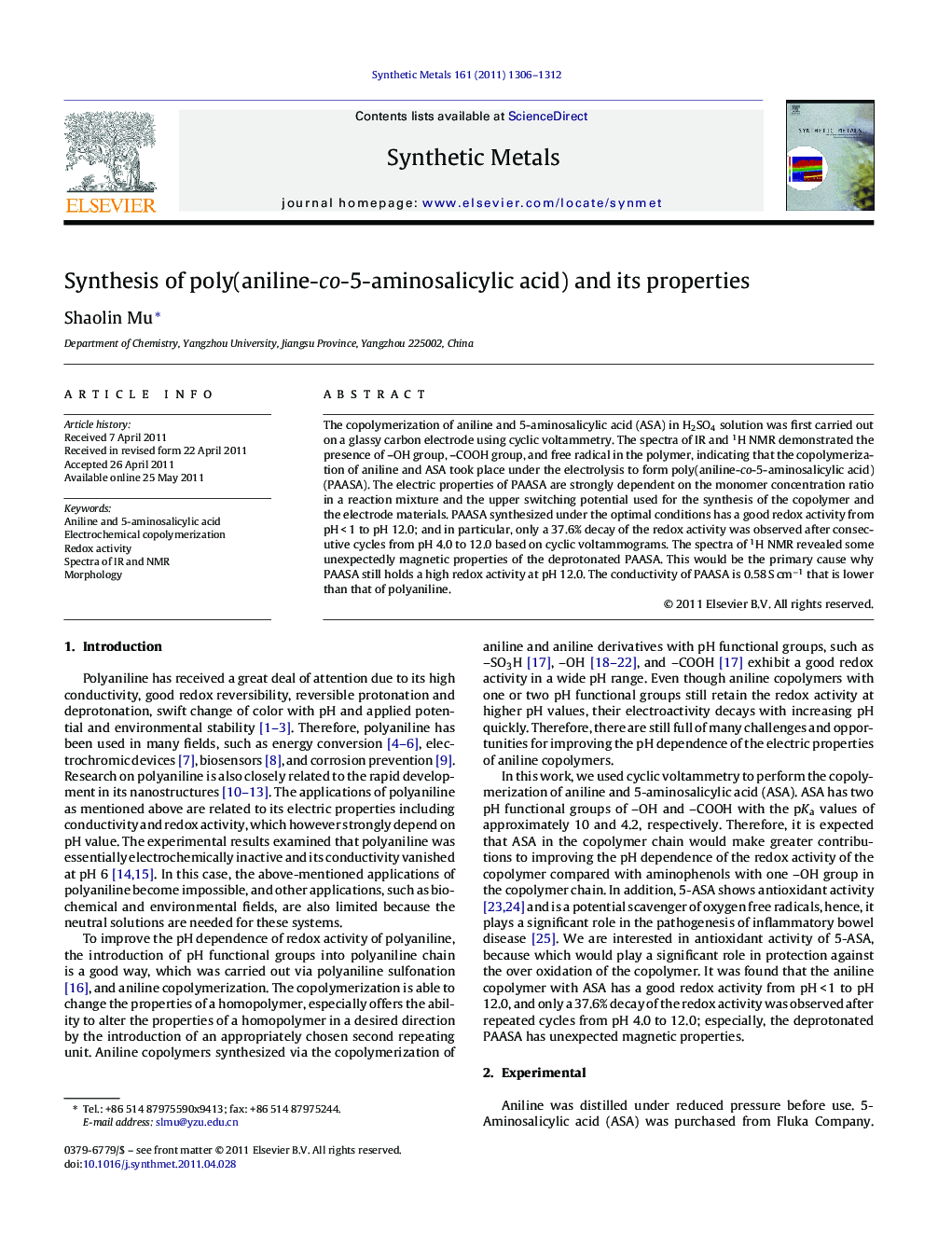| Article ID | Journal | Published Year | Pages | File Type |
|---|---|---|---|---|
| 1442016 | Synthetic Metals | 2011 | 7 Pages |
The copolymerization of aniline and 5-aminosalicylic acid (ASA) in H2SO4 solution was first carried out on a glassy carbon electrode using cyclic voltammetry. The spectra of IR and 1H NMR demonstrated the presence of –OH group, –COOH group, and free radical in the polymer, indicating that the copolymerization of aniline and ASA took place under the electrolysis to form poly(aniline-co-5-aminosalicylic acid) (PAASA). The electric properties of PAASA are strongly dependent on the monomer concentration ratio in a reaction mixture and the upper switching potential used for the synthesis of the copolymer and the electrode materials. PAASA synthesized under the optimal conditions has a good redox activity from pH < 1 to pH 12.0; and in particular, only a 37.6% decay of the redox activity was observed after consecutive cycles from pH 4.0 to 12.0 based on cyclic voltammograms. The spectra of 1H NMR revealed some unexpectedly magnetic properties of the deprotonated PAASA. This would be the primary cause why PAASA still holds a high redox activity at pH 12.0. The conductivity of PAASA is 0.58 S cm−1 that is lower than that of polyaniline.
